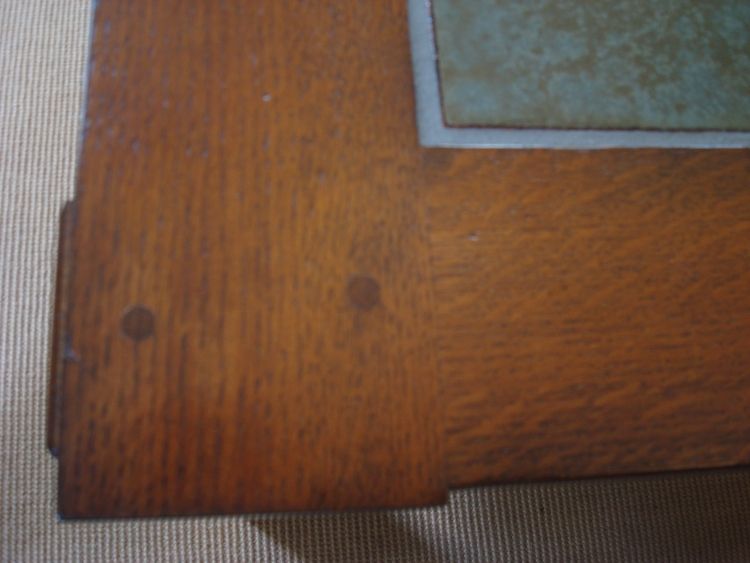Grain Darkening and Stain Recipe Match for Oak
A finisher gets a few suggestions for how to match a piece of stained oak. December 9, 2010
Question
I made a quartersawn white oak Mission style bench for a customer and am trying to work out how to go about finishing it. From the beginning, it was understood that we would stain and seal it, as I have never tried fuming and an exact color match was not necessary. So I was not concerned with having him sign off on a sample, as I would just have him pick from some samples after I had the materials to show him.
After sending a few photos of scrap 1 coat stain samples to my customer, he replied with this photo. I found a couple different articles for recipes on Mission finishes, but nothing like this with the light golden, reddish brown, then the darker pores. I understand that it most likely requires wash coats, but I haven't attempted to match anything like this and was hoping someone else has done it before.
Any suggestions? He seems patient and I just want to get it right. I have about 4 feet of scrap I was hoping to keep for myself, but it seems I won't be able to now!

Click here for higher quality, full size image
Forum Responses
(Finishing Forum)
From contributor W:
Will this help?
Mission Oak Finish article by Jeff Jewitt
From contributor J:
All I see is a dark brown quartz type grain fill followed by the appropriate stain and topcoat. 3 steps, very easy.
From contributor A:
Put some Gilsonite in the stain and it will darken the open grain without totally darkening everything else.
From contributor I:
I think the black in the pores and grain is glaze. So the finishing steps should be:
1. Stain (yellow golden color)
2. Wash coat
3. Glaze (dark brown or black color)
4. Sealer
5. Brush glaze to darken the edges
6. Sealer
7. Topcoat
Try on a scrap first until you get the system down before applying to the product.
From contributor S:
Sherwood chestnut stain with Sherwood ebony for the black in the pores, and seal and topcoat.
From contributor T:
MLC Dark Oak Wiping stain. Seal Coat. Scuff. Van Dyke Brown Vintage Glaze. Clearcoat (x2).
From contributor H:
I've been restoring Gus furniture for years and have used water based aniline dyes to reproduce their colors. You can use walnut crystal as a base and add either yellow or orange WB powder. The only problem is they fade very quickly and without a good finish, a spot of water will take the color right off. If you can get away with a solvent base stain you will be better off in the long run. You can try starting with a medium walnut and add some base concentrates to bring out any red or orange tones if need be. You also will probably want to keep the topcoat sheen to a dull satin. I'm pretty sure most of the Audi stuff (which I think the coffee table pictured is) are solvent base stain and lacquer topcoats.
From the original questioner:
Thanks for the recommendations. I am still working on this, but getting close. I started with Transfast Light Oak dye, then shellac, then Colonial Maple stain, shellac, and from there have two samples: one red oak and one Sedona red. Neither are right on, but they are both close, so I might try to mix them at this step. I am thinking I will seal it again after and use English chestnut or dark walnut, finishing with two coats of shellac.
